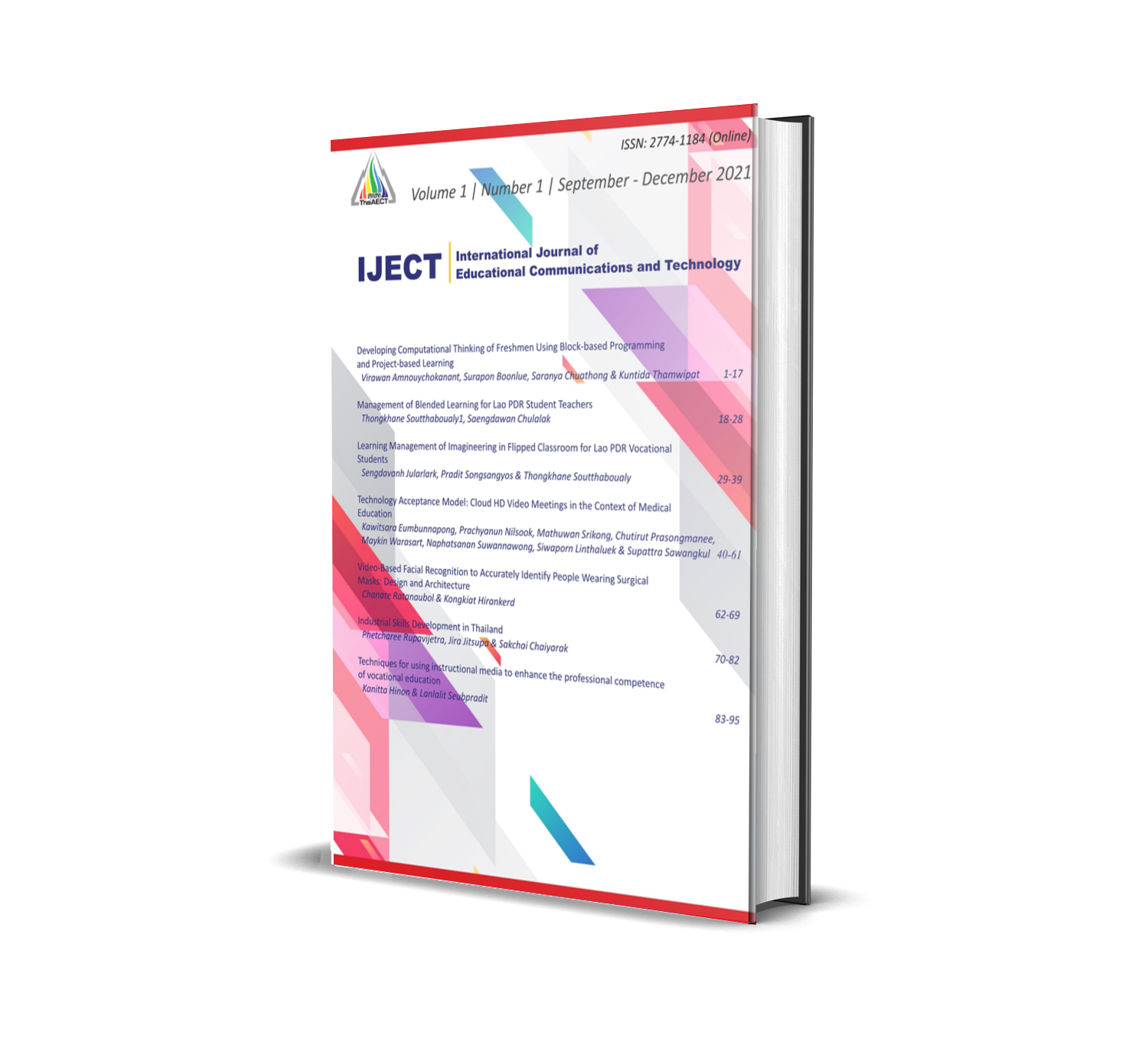Quality Online Teaching and Learning
Keywords:
quality online learning, blended learning, microlearningAbstract
Online teaching has become a new normal in the education industry, a common thing for teachers. Everyone must arrange learning for the learner. The basic characteristics are to manage learning in the same on-time manner as Synchronous Learning. And managing learning in a different way is Asynchronous Learning, which has different ways of managing learning. But to manage quality online learning, there must be a combination of ways to manage learning. By managing face-to-face learning and the online learning characteristics are the reform blended learning. Synchronous and Asynchronous mixes called Hybrid learning create constant interactions with learners, as well as manage learning in a short way. Without providing too much content called microlearning learning, it will make learning a quality learning class.
References
Bates, T. (2016). 10 Fundamentals of Teaching Online for Faculty. Research Associate Contact North | Contact Nord. Retrieved from http://teachonline.ca/10fundamentals
Cher Ping Lim, & Wang Libing. (2017). Blended Learning for Quality Higher Education: Selected Case Studies on Implementation from Asia-Pacific. Taylor’s Education Group. Bangkok: UNESCO Bangkok office. Retrieved from https://bangkok.unesco.org/sites/default/files/assets/article/Higher Education/publications/Blended Learning for Quality Higher Education - Selected Case Studies on Implementation from Asia-Pacific.pdf
Funds-in-trust, S. (2021). Blended Learning for Quality Higher Education in Asia-Pacific Self-Assessment Report : ICT for Education Program WHAT IS BLENDED LEARNING ?, (March), 1–15.
Hinon, K., Nilsook, P., & Wannapiroon, P. (2020). Development of Lesson Plans for Practicing Electrical Installation Professional Experience with Competency-Based Training System in Building Electricians. Advances in Intelligent Systems and Computing (Vol. 1135 AISC). Springer International Publishing. https://doi.org/10.1007/978-3-030-40271-6_23
Huang, R.H., Liu, D.J., Tlili, A., Yang, J.F., Wang, H. . (2020). Handbook on Facilitating Flexible Learning During Educational Disruption : The Chinese Experience in Maintaining Undisrupted Learning in COVID-19 Outbreak. Smart Learning Institute of Beijing Normal University and UNESCO. Retrieved from http://marefateadyan.nashriyat.ir/node/150
Huang, R. H., Liu, D. J., Guo, J., Yang, J. F., Zhao, J. H., Wei, X. F., … Chang, T. W. (2020). Guidance on flexible learning during campus closures: Ensuring course quality of higher education in COVID-19 outbreak. Smart Learning Institute of Beijing Normal University.
Leela, S., Chookeaw, S., & Nilsook, P. (2019). An Effective Microlearning Approach Using Living Book to Promote Vocational Students ’ Computational Thinking. In Proceedings of the 2019 The 3rd International Conference on Digital Technology in Education (pp. 25–29). https://doi.org/10.1145/3369199.3369200
Mohammed, G. S., Wakil, K., & Nawroly, S. S. (2018). The Effectiveness of Microlearning to Improve Students ’ Learning Ability. International Journal of Educational Research Review, 3(3), 32–38.
Nilsook, P. (2017). Competency-Based Training for Skill development of Building Electricians. Bangkok. Oregon Department of Education. (2021). Comprehensive Distance Learning. Oregon.
Pape, L., & Wicks, M. (2011). National Standards for Quality Online Programs. International Association for K-12 Online Learning. Retrieved from http://www.eric.ed.gov/ERICWebPortal/recordDetail?accno=ED509638
Phuengrod, S., Wannapiroon, P., & Nilsook, P. (2021). The Student Relationship Management System Process with Intelligent Conversational Agent Platform. Higher Education Studies, 11(2), 147. https://doi.org/10.5539/hes.v11n2p147
Phunaploy, S., Nilsook, P., & Nookhong, J. (2021). Effects of AL-MIAP-based Learning Management to Promote Digital Intelligence for Undergraduate. Multidisciplinary Journal for Education, Social and Technological Sciences, 8(1), 13. https://doi.org/10.4995/muse.2021.14048
Rajabhat Poll. (2021). Online Instruction in the Epidemic Situation of COVID-19. Retrieved from https://register.kpru.ac.th/RajabhatPoll
Sarnok, K., Wannapiroo, P., & Nilsook, P. (2018). Digital Learning Ecosystem by Using Digital Storytelling for Teacher Profession Students. International Journal of Information and Education Technology, 9(1), 21–26. https://doi.org/10.18178/ijiet.2019.9.1.1167
Taechatanasat, P., Armstrong, L., & Nilsook, P. (2017). Designing a multilanguage blended learning system for Thai agricultural science students. In Proceedings of 2016 IEEE International Conference on Teaching, Assessment and Learning for Engineering, TALE 2016. https://doi.org/10.1109/TALE.2016.7851783
UNESCO-Shenzhen Funds-in-Trust. (2021). Building ecosystems for online and blended learning : Advancing equity and excellence in higher education in the Asia-Pacific. Bangkok: UNESCO Bangkok Office.
Virtual Learning Leadership Alliance. (2019). National standards for quality online learning. Virtual Learning Leadership Alliance. Retrieved from https://www.nsqol.org/about/
Wannapiroon, P., Nilsook, P., Jitsupa, J., & Chaiyarak, S. (2021). Technology acceptance of online instruction for vocational instructors in new normal education. World Journal on Educational Technology : Current Issues, 13(4), 635–650. https://doi.org/10.18844/wjet.v13i4.6234
Wannapiroon, P., Nilsook, P., Jitsupa, J., & Chaiyarak, S. (2022). Digital Competences of Vocational Instructors with Synchronous Online Learning in Next Normal Education. International Journal of Instruction, 15(1), 293–310.
Downloads
Published
How to Cite
Issue
Section
License

This work is licensed under a Creative Commons Attribution-NonCommercial-NoDerivatives 4.0 International License.







